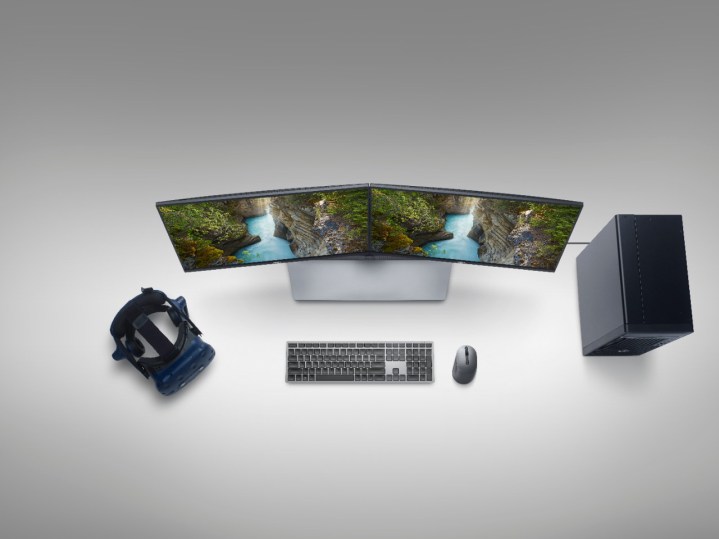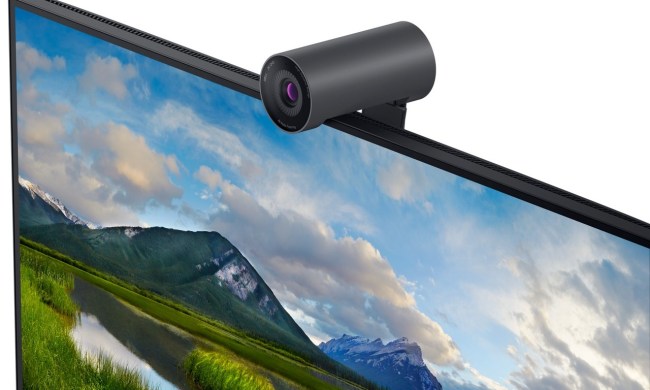
You might not think about it often, but a lot of raw materials like aluminum and plastic go into making the laptop or the desktop that is currently sitting on your desk.
For those materials to eventually end up in places like your hard drive or a keyboard deck, companies end up using up a lot of physical resources and energy during the manufacturing process. This is one of the reasons why Dell has a list of things it hopes to change across its manufacturing process and beyond with its 2030 moonshot goals.
We’re now seeing one of those goals come to life in an actual product. Dell’s new OptiPlex 7090 Tower and Small Form Factor PC is one of the first available with closed-loop recycled aluminum used in the hard drive. This process saves more than 90% of the energy needed to make new aluminum, meaning a lower carbon footprint and lower emissions, which helps minimize Dell’s environmental impact.
I had the chance to sit down and talk with Allison Ward, senior engineer for environmental affairs with Dell Technologies, about what goes into this new program, plus a lot more.
It all started with a photo

To kick off our conversation, I spoke with Ward about the inspiration for what went into this latest Dell closed-loop recycling program. After all, it’s not every day you hear of how materials in desktops can end up going full circle — and how it can help contribute to Dell’s goal of having 50% of all its products made from recycled or renewable materials by the year 2030.
Interestingly enough, Ward told me this all started with a simple photo taken during a tour of a partner’s recycling facility in Malaysia. Though Dell was already working with partners on a rare-earth magnet recycle program, there was something else at this facility that really stuck out, something that goes beyond the 19,000 pounds of recovered magnets that have already been used in Dell and Dell’s competitor’s products.
Her director actually saw a massive pile of aluminum from old hard disks that was just sitting unused in the warehouse. Dell then figured it could go into their own products.
“The focus of that tour was on magnets, which is a smaller material and a smaller component in the hard drive. But as we were walking through the facility, my director stopped and took a photo of this huge pile of recycled scrap aluminum and it was amazing to see,” said Ward.
After noticing all that scrap aluminum, Dell had the thought of stepping things up to a larger scale, instead of just one magnet. “Why couldn’t it be transferred to new material like aluminum, which is commonly used in the Dell portfolio,” said Ward.
Defining closed-loop recycling
Not everyone is an environmental expert, so “closed-loop recycling” might not mean much to you, as an average PC buyer. But for Dell, it is a pretty big deal.
Ward says aluminum is one of the top five materials by weight in the products Dell makes. So, using aluminum from existing recycled products instead of sourcing it new is huge in terms of sustainability.
“It’s a key focus for us to meet that 2030 goal,” said Ward. “When you looked at recycled aluminum versus nonrecycled sources, it can save up to 90 percent of the energy and carbon emissions, so it lowers our footprint, helping achieve our and our customer goals as well.”
Curious about how the process works, I asked Ward about how a typical hard drive would end up going through part of the closed-loop recycling process. It actually surprised me. There’s so much thought that goes into ensuring no materials go to waste. Ward put it nice and simply. “There’s a lot of coming from your old tech and going back into your new tech,” she said.

First off, Dell defines anything it uses in closed-loop aluminum recycling as a product that’s coming from an IT product and going back into an IT product. It doesn’t even have to be a Dell-branded IT product, either, as all different brands of products are selected through Dell’s Takeback program. This is to ensure the process is as scalable as possible.
Ward then guided me through the steps, a bit like if I were in a Dell factory myself.
“What we’re doing is harvesting end-of-life hard drives. Those are disassembled, the aluminum-containing components are removed and cleaned. and then they’re smelted and put in an aluminum ingot. Then those are recast into a new motor baseplate, which is the biggest aluminum-containing piece on the hard drive.”
Eventually, at the end of the process, the hard drive is built with 20% (by weight) of closed-loop recycled aluminum. Its traditional spinning components and magnets are then added and the hard drive is then put into products like the new OptiPlex 7090 Small Form Factor PC.
The sustainable future is bright
For Dell, this new program should not be surprising. Dell has already created over 100 million pounds of recycled plastic parts and used similar closed-loop plastic on more than 125 different product lines.
It has also recovered more than 2.1 billion pounds of e-waste for responsible recycling or reuse in its products. And, on the consumer side, Dell has used sustainably sourced packaging on the XPS lineup. Even select Dell Latitude laptops are made of tree waste and bioplastics.
That’s a lot of numbers, but Ward tells me this is all important for meeting its goal of having 50% of its products made from recycled or renewable materials by the year 2030.
While it is true that the scope of this new program is limited at the moment because only a select number of Dell products still use spinning hard drives, Dell thinks there’s a lot of ways to learn from this heading into the future. The company is always seeking out feedback from partners and looking at the supply chain and where materials go across all its lines of business.
“We’re constantly looking at ways in how we’re going to expand our learnings from this program. Not all of our products accept spinning hard drives, but we really can’t leave material uninvestigated. Whether that be an XPS or a large server, we’re kind of all looking at that for expansion, said Ward.
This program is just the start. Ward tells me a lot of the focus will be on other important materials like plastics and other metals. Using fewer screws and glues in products is something Dell has also considered.
“Even beyond that, we’re constantly looking at how we can innovate further, whether that be how we make products more recyclable, or even how they can be easily prepared and reused. Some of our design team is looking at that,” Ward said.
A pattern for the industry
For a greener future for everyone that involves less waste, it’s hard to look at just what Dell is doing. My conversation with Ward might have been focused on Dell’s closed-loop recycling of aluminum, but others in the industry are also taking steps toward a greener future.
Apple has committed to be 100% carbon neutral in terms of its supply chain and products by 2030. It also uses recycled aluminum enclosures. HP, meanwhile, is using ocean-bound plastics in its products, with the Dragonfly is made of 80% recycled materials. Even Microsoft is doing its part, reducing the size of its packaging so the company as a whole can be more sustainable.
Dell is aware of all the progress in the industry, Ward says, and is happy to see everyone do their part.
“It’s great what those other companies are doing. We all know that you can’t achieve a fully circular economy alone — it takes multiple companies, multiple industries all coming together.”


